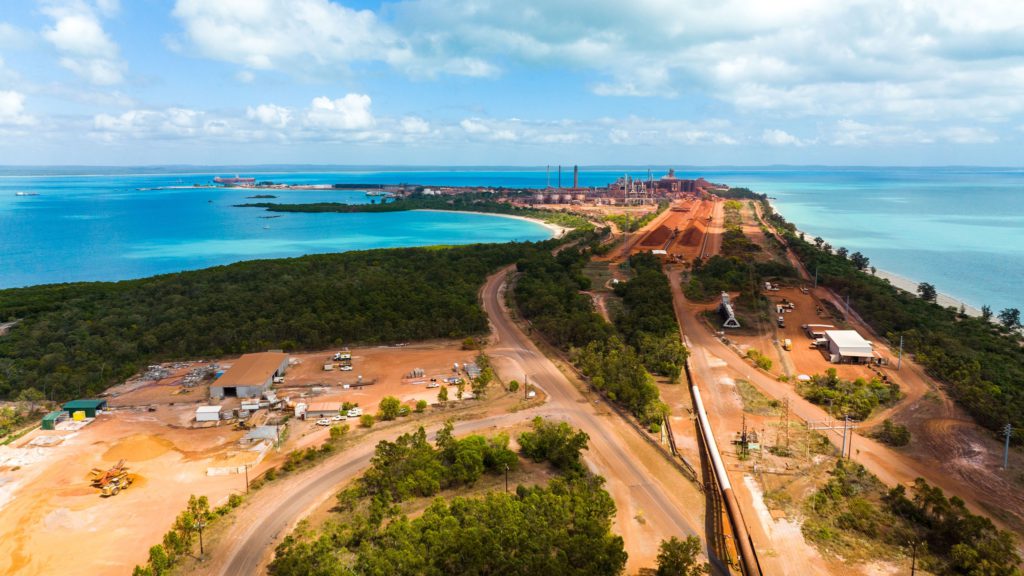Staff Writer | July 3, 2024 |\

Rio Tinto Gove is located 650km east of Darwin in North East Arnhem Land. Credit: Rio Tinto
Rio Tinto (ASX: RIO) is looking to build two new 5.25-megawatt (MW) solar farms on Gove Peninsula in the Northern Territory, as the Australian miner works to secure a more sustainable power supply for the region beyond mining.

Rio Tinto’s Gove site in Australia’s Northern Territory has been supplying the global aluminum industry with bauxite for more than 40 years. The bauxite is shipped internationally as well as being used to supply the Queensland Alumina Limited and Yarwun refineries in Gladstone, Queensland. These refineries produce alumina as feedstock for Rio Tinto’s Australian aluminum smelting operations and for sale on the international market.
Bauxite mining operations in the Gove Peninsula are expected to end later this decade and work is already underway to support the closure of the operation and rehabilitation of the refinery, mine site and tailings facilities.
The two solar farms will be built on Gumatj and Rirratjingu country, the largest Traditional Owners groups who are signatories to the RTA Gove Traditional Owners Agreement. The solar farms will be built on Rio Tinto leases following agreements with the Traditional Owner groups on the location of the facilities.
The solar farms will help underpin a low-carbon future for the Gove community after mining operations cease, towards the end of the decade, Rio said.
Scotland-based mobile modular power provider Aggreko has been engaged to construct, own and operate the solar farms for Rio Tinto for up to 10 years, beginning construction in July 2024 and with completion scheduled for early 2025. The two sites will have a combined capacity of 10.5MW.
“The Gove solar project is part of our shared vision with traditional owners to leave a positive legacy for the Gove Peninsula communities after bauxite mining ceases,” Rio Tinto Gove operations’ acting general manager Shannon Price said in a news release.
“We’re excited to work with the Gumatj and Rirratjingu clans to provide an opportunity to secure alternative electricity generation assets on their country and to discuss opportunities to commercialize energy infrastructure in the future,” Price said.
“We are working in partnership with the Northern Territory government and traditional owners to ensure a smooth transition of leased land and town assets and infrastructure as Rio Tinto prepares to stop mining at Gove later this decade.”
According to Rio, the group is committed to helping to plan for the region’s future, which includes providing options for reliable, affordable and environmentally sustainable infrastructure.
“The solar farms are also part of our ongoing commitment to decarbonize our business. Once operational, they are expected to reduce annual CO2e emissions at our Gove operations by up to 17%,” Price said.
“We intend for these farms to underpin sustainable power for the region beyond mining.”
When complete, the solar farms are expected to reduce the region’s annual diesel consumption by about 20%, or 4.5 million litres a year, and lower annual carbon emissions by over 12,000 tonnes, which is the equivalent of taking 2,800 internal combustion engine cars off the road, Rio estimates.
No comments:
Post a Comment